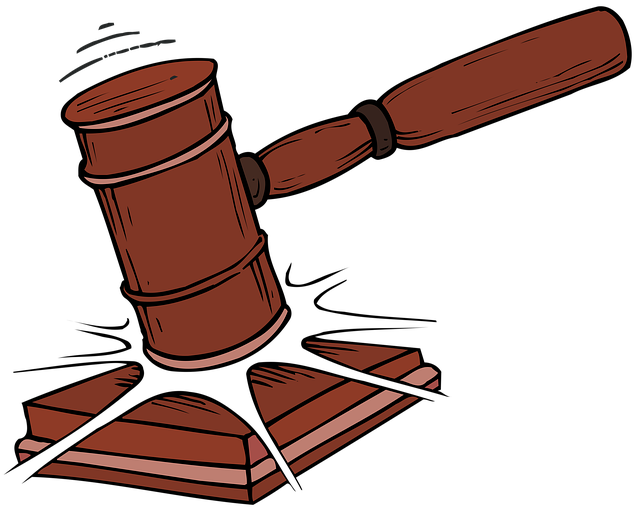Dangerous Dog Lawyer: Preventing Incidents, Seeking Justice for Safer Communities
Dangerous dog lawsuits require specialized attorneys who navigate complex legal issues involving dog…….
In an era where dogs are not just pets but beloved family members, the concept of a ‘Dangerous Dog Lawyer’ has emerged as a critical component of animal welfare and public safety. This article delves into the intricate world of legal expertise focused on managing high-risk canine cases, exploring its historical roots, global reach, and the profound impact it has on communities worldwide. By examining various facets, from economic implications to technological innovations, we aim to provide a comprehensive understanding of this specialized field and its role in ensuring responsible pet ownership.
A ‘Dangerous Dog Lawyer’ is a legal professional who specializes in cases involving dogs deemed a significant risk to public safety. This specialization within animal law addresses situations where a dog’s behavior or history indicates potential harm to individuals or other animals, often leading to severe legal consequences for owners.
Core Components:
Historically, the concept emerged as a response to growing concerns over dog bites and attacks in the late 20th century. Strict liability laws, which held dog owners entirely responsible for their pet’s actions, led to many owners facing severe penalties, even for first-time offenses. This prompted the need for legal representation that could navigate these complex cases while advocating for fair treatment of dog owners.
The influence of dangerous dog lawyers extends far beyond national borders, with significant variations in legislation and cultural attitudes shaping their work:
| Region | Legal Framework | Cultural Perspective | Trending Challenges |
|---|---|---|---|
| North America | Strict liability laws prevalent; specific ‘dangerous dog’ legislation varies by state/province. | High awareness of dog bite prevention, with a focus on liability and compensation. | Increasing cases involving social media harassment related to dog incidents. |
| Europe | Diverse approaches, with some countries adopting strict liability, while others focus on owner responsibility and risk assessment. | Mixed reactions; some nations promote responsible ownership, while others struggle with stray dog populations. | Rise in cross-border pet trafficking, requiring international legal cooperation. |
| Asia | Varies widely; some countries have no specific dangerous dog laws, while others are implementing new legislation. | Cultural attitudes differ, with some societies valuing dogs as working animals and others as pets. | Limited access to legal representation in rural areas, leading to potential owner rights violations. |
| Australia & New Zealand | Similar to North America, with state/territory variations. Focus on education and community-based solutions. | High level of dog ownership and pet-friendly culture. Stresses responsible breeding practices. | Increasing concerns over ‘status’ dogs and their role in criminal activities. |
These regional disparities highlight the dynamic nature of dangerous dog law, with constant adaptations to local needs and cultural contexts.
The economic aspects of this specialized legal field are multifaceted:
Technology plays a significant role in modernizing dangerous dog law practices:
The development of dangerous dog laws is a complex interplay of local, state/provincial, and international policies:
Despite its critical role, the field of dangerous dog law faces several challenges:
Proposed Solutions:
In Hamilton, New Zealand, a collaborative approach between local authorities, veterinarians, and community groups successfully reduced the number of dangerous dogs. The program involved mandatory training for dog owners, microchipping, and a point-based system for behavior monitoring. This holistic strategy led to a 40% decrease in dog bite incidents over three years, demonstrating the power of community involvement.
Germany’s rigorous breeder regulations have significantly reduced the presence of dangerous dogs. Licensing requirements include extensive training and testing for breeders, as well as regular inspections. This approach has led to a decrease in aggressive dog behavior, proving that stringent measures can yield positive outcomes.
A novel legal strategy in California involves community-based conflict resolution programs. Owners of potentially dangerous dogs work with mediators to develop safety plans and agree on terms to ensure their pets’ future well-being. This approach has shown success in avoiding costly litigation while promoting responsible ownership.
The field of dangerous dog law is poised for significant growth and evolution, driven by several factors:
The concept of a dangerous dog lawyer has evolved into a vital component of modern animal welfare and public safety systems. As the world becomes increasingly connected, the need for specialized legal expertise to address this complex issue is more critical than ever. By navigating the intricate interplay of policy, technology, and cultural attitudes, these lawyers contribute significantly to fostering safe communities and responsible pet ownership.
Q: What happens if my dog is deemed dangerous?
A: If your dog is classified as dangerous, you may face strict penalties, including fines, license revocations, or even impoundment. A dangerous dog lawyer can help navigate these consequences and advocate for a fair outcome, ensuring your rights are protected.
Q: Can I afford a dangerous dog lawyer?
A: Legal aid options and sliding scale fees make legal representation accessible to many owners. Many lawyers also offer pro bono services or payment plans in such cases. It’s essential to discuss financial options with potential legal counsel.
Q: How can technology help my case as a dog owner?
A: Technology provides valuable evidence, aids in communication with lawyers, and offers efficient case management tools. Social media posts, for instance, can be analyzed for context and sentiment, which may be crucial in certain cases.
Q: Are all breed bans effective in preventing dangerous dogs?
A: Breed-specific legislation is highly controversial and often ineffective. Banning specific breeds doesn’t address the root causes of aggression. A more holistic approach, focusing on responsible ownership and risk assessment, is generally considered more successful.

Dangerous dog lawsuits require specialized attorneys who navigate complex legal issues involving dog…….

For a successful case with a dangerous dog lawyer, meticulously collect and preserve diverse evidenc…….

Dangerous dog lawsuits require specialized legal expertise due to complex nature and varying state/l…….

In cases involving dangerous dogs, a specialized dangerous dog lawyer is crucial. These experts navi…….

A dangerous dog lawyer is an expert advocate for victims of aggressive canine attacks, specializing…….

When a dog causes harm, a dangerous dog lawyer is crucial for navigating complex legal matters. Thes…….

Victims of dog attacks can seek compensation through dangerous dog lawyers, who navigate personal in…….

After a dog bite, a dangerous dog lawyer is essential for navigating complex legal issues and seekin…….

Understanding Dog Liability Laws: A Foundation for Legal ActionThe Role of a Skilled Dangerous Dog L…….

Dangerous dog lawsuits require specialized legal expertise to hold accountable parties responsible f…….